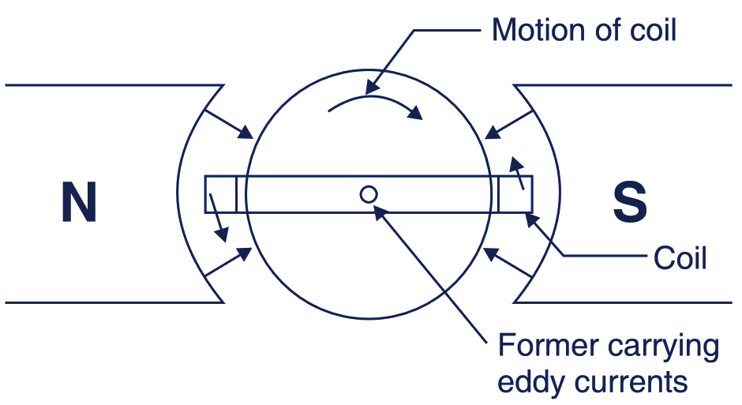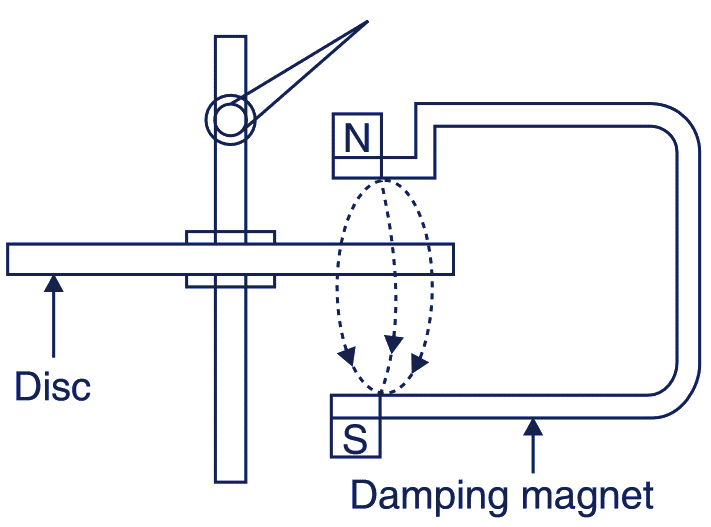In this topic, you study the theory and diagram of Eddy Current or Electromagnetic Damping.
This method follows the principle of electromagnetic induction that when a conductor moves in a magnetic field, an emf is induced in the conductor and hence a current is produced. If the moving conductor is in the shape of a aluminium former or disc (closed path) the produced current is in the form of eddy currents. The interaction of the Currents and the magnetic field produces the necessary dumping torque which opposes the motion of the moving system as both are in the opposite direction (lenz’s law).
This torque is proportional to the strength of the magnetic field and the current produced. The current is in proportional to the emf which in turn is proportional to the velocity of the former or disc. Thus if strength of the magnetic field kept constant (i.e.. permanent magnet is used) the torque is proportional to the velocity of the disc (or the moving system) of the instrument. Eddy currents damping is provided by:
- a former,
- a disc.
Eddy currents damping by a Former
This method is used in permanent magnet moving coil (PMMC) instrument (see Fig. 1). The operating coil of the instrument is wound on an aluminium former, to which the pointer is attached. The operating coil carries the current of the circuit to be measured. When this coil moves in the magnetic field under the influence of deflecting torque eddy currents are induced in the former thus damping torque is produced which opposes the motion.

Fig. 1. Eddy Current Damping (by former)
Eddy currents damping by a Disc
In this method (see Fig. 2), a thin aluminium (nonmagnetic) disc mounted on the spindle carrying the pointer is allowed to rotate in the air gap of the damping permanent magnet. When the spindle rotates under the influence of the deflecting torque. disc cuts the lines of force of the damping magnet and eddy currents are induced in the disc. As a result a force (damping torque) acts on the disc which opposes its motion or motion of the moving system of the instrument.

Fig. 2. Eddy Currents Damping system of the instrument.
The eddy currents damping is the most efficient form of damping. It is very convenient to use in the instruments which have already a permanent magnet, a metal disc or a former as a part of the instrument. For this reason this method is used in all hot wire. moving coil and induction type instruments.
This method however cannot be used, where permanent magnet used to produce eddy currents may disturb the main field already existing. This is the reason that this damping is not provided in moving iron instruments as the field of the damping magnet may distort the main field, which produces the deflecting torque.